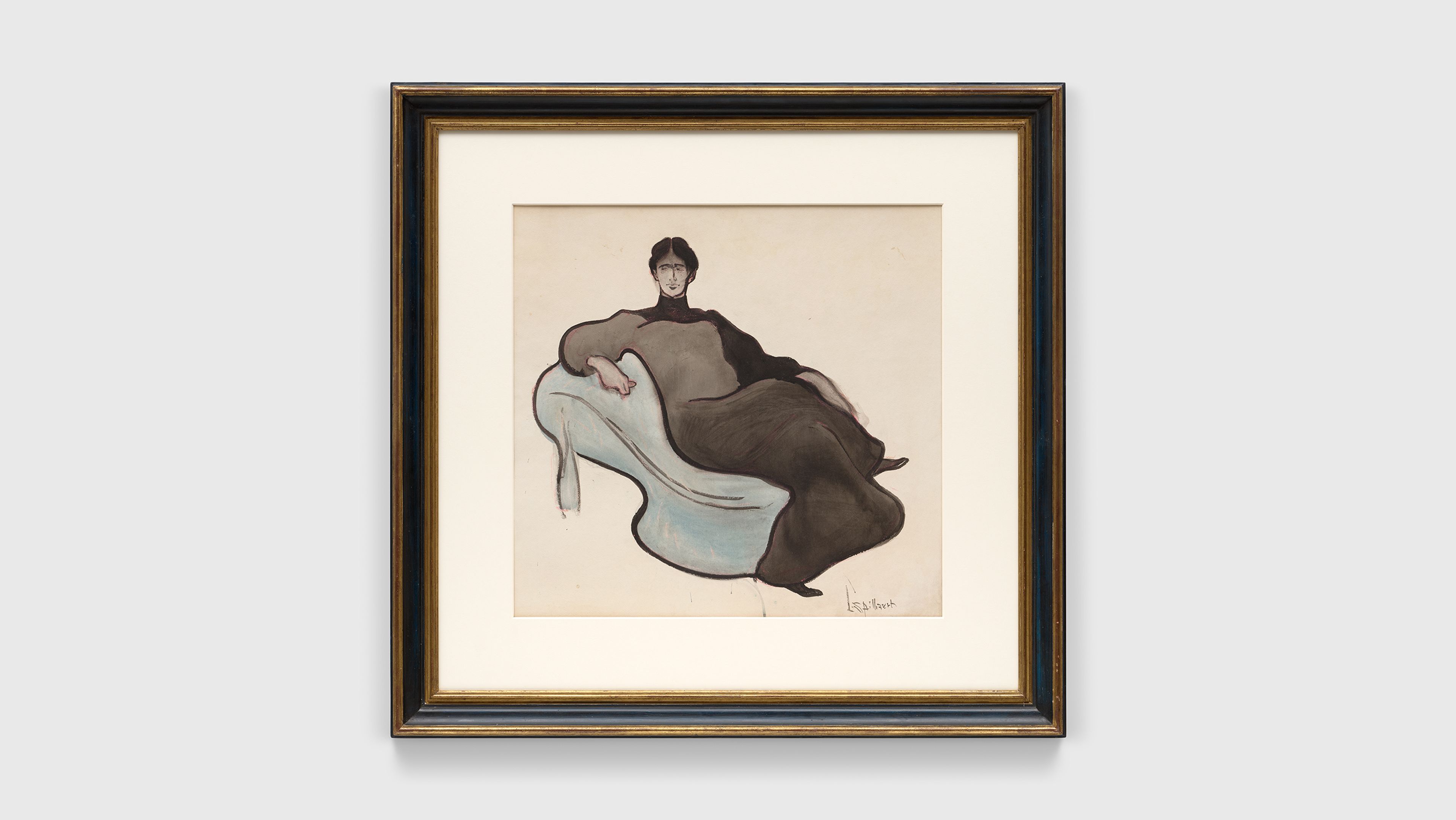Exhibition
Léon Spilliaert
Want to know more?
Past
March 5—April 12, 2025
Opening Reception
Wednesday, March 5, 6-8pm
Location
New York: 20th Street
537 West 20th Street
New York, New York 10011
Tue, Wed, Thu, Fri, Sat: 10 AM-6 PM
Artist
Léon Spilliaert
Curators
Dr. Noémie Goldman

Léon Spilliaert, Dame au canapé (Lady on a sofa), 1907
Explore

Exhibition Checklist: Léon Spilliaert
“Contemplation and meditation are essential components of Spilliaert’s artistic career.”
—Dr. Noémie Goldman and Dr. Anne Adriaens-Pannier, in Léon Spilliaert, 2020

Installation view, Léon Spilliaert, David Zwirner, New York, 2025

Léon Spilliaert, left, with the sculptor Oscar Jespers on the balcony of the Kursaal, Ostend, August 1925. Photo by Maurice Antony
“From his very youth he was somewhat unworldly: an introvert, sensitive and dreamy character.”
—Norbert Hostyn, art historian, 2006

Exceptional Works: Léon Spilliaert

Installation view, Léon Spilliaert, David Zwirner, New York, 2025
“The spectator would be dazzled by his range of genius: works which are actually united by their distinctiveness, reflecting the indefatigable imagination of the artist.”
—Henri Vandeputte, c. 1920s, cited in Léon Spilliaert: Symbol and Expression in 20th Century Belgian Art, 1980

Installation view, Léon Spilliaert, David Zwirner, New York, 2025
“I am a bad interpreter of other people’s dreams, I have too many myself.”
—Letter from Léon Spilliaert to Edmond Deman, November 26, 1907

Installation view, Léon Spilliaert, David Zwirner, New York, 2025

Sunset in Ostend. c.1900. Photographer unknown
“[Spilliaert] saw his unpeopled Ostend as a kind of liminal space between the outside and his interior world. In a 1920 letter, he wrote of the city, ‘I am living in a real phantasmagoria … all around me dreams and mirages.’”
—Natalie Haddad, Hyperallergic, 2020

Installation view, Léon Spilliaert, David Zwirner, New York, 2025
“He takes what he needs from Munch, Khnopff, Rops, Van Gogh, carving out his own niche.... The key to Spilliaert’s genius is his creative symbiosis of the symbolist and the expressive.”
——Will Stone, Apollo Magazine, 2016
“His art communicates, above all, a vertigo of the infinite.”
—François Jollivet-Castelot, Writer and occultist

Installation view, Léon Spilliaert, David Zwirner, New York, 2025

Inquire about works by Léon Spilliaert
























